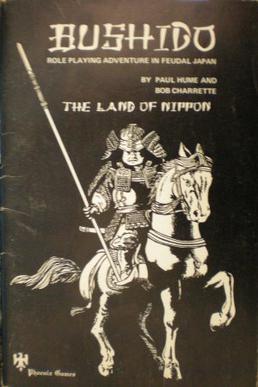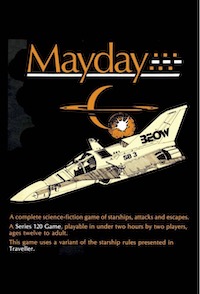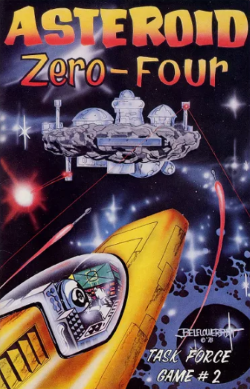Related Research Articles

RuneQuest is a fantasy tabletop role-playing game originally designed by Steve Perrin, Ray Turney, Steve Henderson, and Warren James, and set in Greg Stafford's mythical world of Glorantha. It was first published in 1978 by The Chaosium. Beginning in 1984, publication passed between a number of companies, including Avalon Hill, Mongoose Publishing, and The Design Mechanism, before finally returning to Chaosium in 2016. RuneQuest is notable for its system, designed around percentile dice and an early implementation of skill rules, which became the basis for numerous other games. There have been several editions of the game.
Traveller is a science fiction role-playing game first published in 1977 by Game Designers' Workshop. Marc Miller designed Traveller with help from Frank Chadwick, John Harshman, and Loren Wiseman. Editions were published for GURPS, d20, and other role-playing game systems. From its origin and in the currently published systems, the game relied upon six-sided dice for random elements. Traveller has been featured in a few novels and at least two video games.

White Bear and Red Moon is a fantasy board wargame set in the world of Glorantha, created by Greg Stafford and published in 1975. Stafford first tried to sell the game to established publishers, but despite being accepted by three different game companies, each attempt ended in failure; eventually he founded his own game company in 1974, the influential Chaosium, to produce and market the game.

Magic Realm is a fantasy adventure board game designed by Richard Hamblen and published by Avalon Hill in 1979. Magic Realm is more complex than many wargames and is somewhat similar to a role-playing game. It can be played solitaire or with up to 16 players and game time can last 4 hours or more. The game board is a type of geomorphic mapboard constructed of large double-sided hexagon tiles, ensuring a wide variety of playing surfaces.
Starfire is a board wargame simulating space warfare and empire building in the 23rd century, created by Stephen V. Cole in 1979.

Bushido is a Samurai role-playing game set in Feudal Japan, originally designed by Robert N. Charrette and Paul R. Hume and published originally by Tyr Games, then Phoenix Games, and subsequently by Fantasy Games Unlimited. The setting for the game is a land called Nippon, and characters adventure in this heroic, mythic, and fantastic analogue of Japan's past.

High Fantasy is a fantasy role-playing game system originally published by Fantasy Productions in 1978. A second edition in 1981 and several subsequent books were published by Reston Publishing that featured solo adventures using the High Fantasy system. The game received mixed reviews in game periodicals including White Dwarf, The Space Gamer, Different Worlds, Ares, and Dragon.

Land of the Rising Sun is a fantasy role-playing game, designed by Lee Gold and published by Fantasy Games Unlimited (FGU) in 1980 that is set in feudal Japan.

All the Worlds' Monsters is a series of fantasy role-playing game supplements published by Chaosium from 1977 to 1980. They were republished in PDF format in 2016.

Mayday is a 1978 board wargame published by Game Designers' Workshop. Mayday was part of a series produced by GDW called "Series 120" – games with 120 pieces that were designed to be learned and played in 120 minutes. It was the second boardgame to be published for Traveller. A second edition was published in 1980. It was republished in 2004 as part of Far Future Enterprises Traveller: The Classic Games, Games 1-6+.

Snapshot is a 1979 board wargame, designed by Marc W. Miller, illustrated by Paul R. Banner and Richard Hentz, cover art by Jennell Jaquays, and published by Game Designers' Workshop. The original was republished in 2004 as part of Far Future Enterprises Traveller: The Classic Games, Games 1-6+.

Traveller Supplement 1: 1001 Characters is a 1978 role-playing game supplement for Traveller published by Game Designers' Workshop.

Traveller Supplement 4: Citizens of the Imperium is a 1979 role-playing game supplement for Traveller published by Game Designers' Workshop.
Starfall is a 1979 board game published by Yaquinto Publications.

Asteroid Zero-Four is a science fiction board wargame published by Task Force Games in 1979.

Freedom in the Galaxy, subtitled "The Star Rebellions, 5764 AD", is a space opera board game published by Simulations Publications, Inc. (SPI) in 1979.

Ice War is a board wargame published by Metagaming Concepts in 1978 that hypothesizes a Eurasian attack against American oilfields in Alaska.
Quirks is a 1980 board game published by Eon Products.
Shooting Stars is a 1980 board game published by Yaquinto Publications.
Warlock is a 1980 card game published by Games Workshop.
References
- 1 2 3 List, Steve (March 1980). "A Galaxy of Games". Ares Magazine (1). Simulations Publications, Inc.: 32.
- ↑ Turnbull, Don (February–March 1980). "Open Box". White Dwarf (17). Games Workshop: 10.
- 1 2 Johnson, Forrest (April 1981). "Featured Review: Time War". The Space Gamer (38). Steve Jackson Games: 7.
- ↑ King, Paul (July–August 1980). "Time War". Phoenix . No. 26. pp. 21–23.